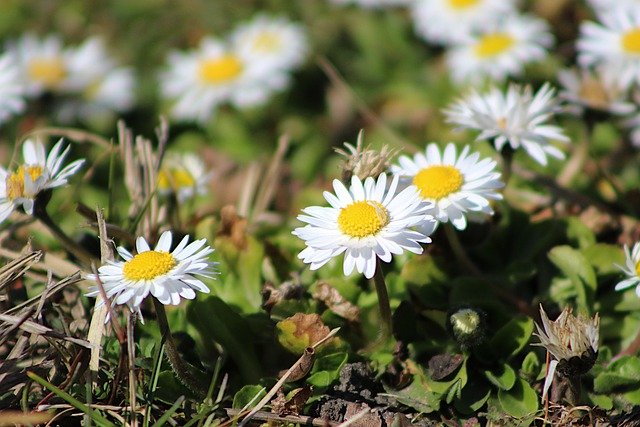
Photography is a great way to invest your time, and a hobby that is especially rewarding. Knowing that through your lens you can capture memories that can be permanently kept make it special. Photography can capture innocence or youth, and you can also see the vitality of former years of those that are older. These tips can bring a fresh approach to your photography. Read on for tips to make your photos come to life.
Don’t make your photographic techniques too complicated; simplifying your process can get you better pictures. There are times when a wonderful photo can be taken without much adjustment in motion or color settings.
If your goal is to take great pictures, don’t skimp on your gear. For the best photos, look into buying a DSLR camera. This is the best equipment on the market, so if you want the best images possible, this is the camera you should choose.
You should strive to take new and original photographs. The best photos you take are the ones that reinforce your personal style and reflect the world as you see it. Avoid classic pictures that you have seen a thousand times. Find unique angles, and do not be afraid to let your creative side loose.
While many would believe that taking pictures when it is sunny will result in glorious pictures, sunlight can actually ruin the quality of an image. Sunlight can cast bad shadows, weird highlights and give your subject squinting eyes. Outdoor shooting is always done best in early mornings or later evenings.
Contrary to popular belief, gorgeous, sunny days are a photographer’s worst nightmare. You can’t take proper photographs if you or your subject is standing directly in the sun’s path. One or both of you will be uncomfortable, and the sun’s glare can make your subject difficult to see in the finished photograph. Direct sunlight casts shadows where you don’t want them, highlights areas of the photograph you’d rather keep dark and may make the photograph’s subject squint or shut his eyes. If you can, only shoot outdoors in the early hours of the morning or during late evening hours.
Another handy photography tip involves the camera’s shutter. Shutter speeds can greatly improve your experience with photography. There are a number of useful options that are labeled with capital letters. The ‘P’ button will take you to the program mode. This setting has your camera determine your shutter and aperture speeds automatically. If you do not know what you will be taking a picture of, have the “P” setting on.
Always pack your photography equipment with great care. Bring all lenses that you think you will possibly use, plus a few extra batteries and cleaning tools. Try and think what is most important on your trip and how convenient it is carry to carry around.
External Flash
When departing on a trip, start shooting photos the minute you walk out the door. Don’t limit yourself to the actual location, but look for unique and interesting things as soon as you begin your journey. An airport has a lot of interesting things to take photos of, so add these to your trip diary of photos.
Almost all digital cameras contain a built-in flash, and it will pop up automatically when dim conditions are detected. Even though these may be convenient, you may want to get an external flash with different light ranges, so that you have more control over your lighting. Try to get a camera with what is known as a “hot shoe” that can take an external flash, and make sure to ask a professional camera shop if it will sync with the camera.
Take shots of people you see in your day. Never take someone’s picture without first obtaining their permission. Pictures like these help you to find more vivid memories when you look back, even if at the time the people seemed unremarkable. Look for people with interesting faces, candid expressions and casual, local dress.
Make sure to find an interesting subject to photograph. You always need good subjects, it doesn’t matter how talented you are or how good your gear is. Chose inanimate objects that inspire you, or search for a willing participant that can act as your muse.
Make sure the subject you are photographing is close enough to clearly see. Nothing is as bad as taking a photograph of something that is not close enough to see well. The result of a close shot will be a vivid picture that you will enjoy more.
Try out different approaches to scale, expressions and perspectives. Any simple subject can be transformed into something artistic when it is used in a funny, unique way, or made to look much smaller or much bigger than it is. Putting an object somewhere creative can help something familiar look very unique.
When taking indoor photos that are under fluorescent lights, try adjusting the white balance for your setting. You will notice that fluorescent light highlights the blue and green light spectrum and will require post processing in order to balance your tones.
Never underestimate the advantages of natural light in your photo compositions. If you are going to take pictures outside, you want to do this when the sun appears lower in the sky; either later afternoon or early morning. Strong natural light casts long shadows and causes the people you are photographing to squint. Use sunlight to its best effect by positioning yourself so that the subject is hit by the sun from the side.
If you plan on diving into landscape photography, you need to ensure that your pictures have three key factors. These include a mid ground, a background, and a foreground. These elements are a fundamental concept of photography, as well as many other art forms.
Help your subjects to prepare ahead by suggesting clothing coordination, particularly with groups and family members. It’s not necessary for them to wear colors that match exactly, but it will look much better in the final picture if they are wearing complementary hues. If it’s a natural environment, let them know to wear warm colors or a more neutral shade of clothing. If there is a need to have bright colors, try wearing black to help the colors be more balanced in the photo.
Though you may want to set your camera at a low setting to store more pictures on the storage card before downloading, know that you sacrifice image quality when you do that. Use the lowest settings when you’re absolutely confident that your shots will only be on computer screens.
Experiment a little with the focus to create interesting pictures. Using a smaller depth of field, otherwise known as an f-stop, will allow you to keep the background blurry and the subject in clear focus. This type of photography is great for portraits, because the subject is usually near the camera and is meant to be the main focus. If you want everything in the composition to be in focus, use a larger f-stop. This is great for taking a wide landscape shot.
Experiment with the focus of your camera to see how it affects your photographs. A lower f-stop means that the main subject will be shaply focused in contrast to a blurry background. This style is good for portraits, where the subject is close to the camera. A larger f-stop number gives you a deeper depth of field. This will result in everything in the photograph being sharp and in focus. This will work well for photographs of landscapes.
As you are taking photographs, one of the decisions you have to make is whether you want your subject’s highlights or shadows to be in the picture. You could possibly take two pictures of the same subject, and expose one of each type by using a program, such as Photoshop, to blend both of them into a high-quality shot.
You do not want to risk missing a fantastic photo because you do not know which camera setting to use or how to adjust it properly. However, don’t use your camera’s preset settings, either. These automatic settings might not give you the effect you want, so it’s better to choose your camera settings manually. Explore each of the settings on your camera and practice using them at times when you are not worried about missing important shots.
Make a custom silhouette. Many people rely on the sun to create a natural silhouette; however, there are many different ways to reproduce this effect. For example, if the subject is not as brightly lit as the background, you can produce a silhouette. It’s easy to create a silhouette by simply getting behind the subject with an off-camera flash. Alternatively, you could place the subject in front of a window that has light streaming through. However, it’s important to remember that unfavorable features may be emphasized in the outline of someone’s body or face.
Try to do all your photo editing yourself. There are many different kinds of photo editing software programs available. Choose software that has a ton of different effects and editing tools available. Make sure you can use it easily as well!
Photography is the best way to capture those special moments that you know you’ll want to remember forever. Even though picture are made from paper, they be amongst one’s most pried possesions. If you can follow and apply the tips you have learned in the article above, you can develop a professional skill set and become a great photographer.
You need to understand how sharpness works when you are framing a shot. Sharpness usually appears in the center of your lens, where the focus should be. The image will soften as it stretches towards the edge of the frame established by your lens.


